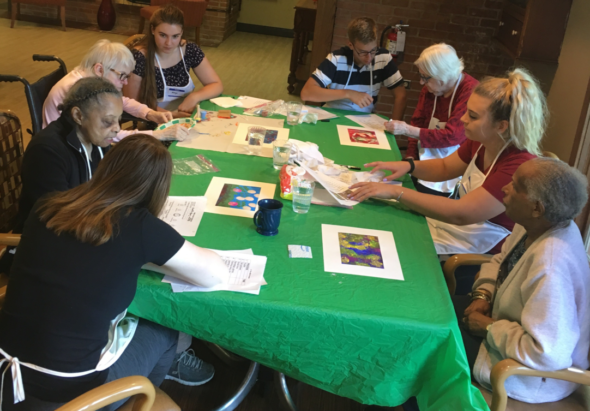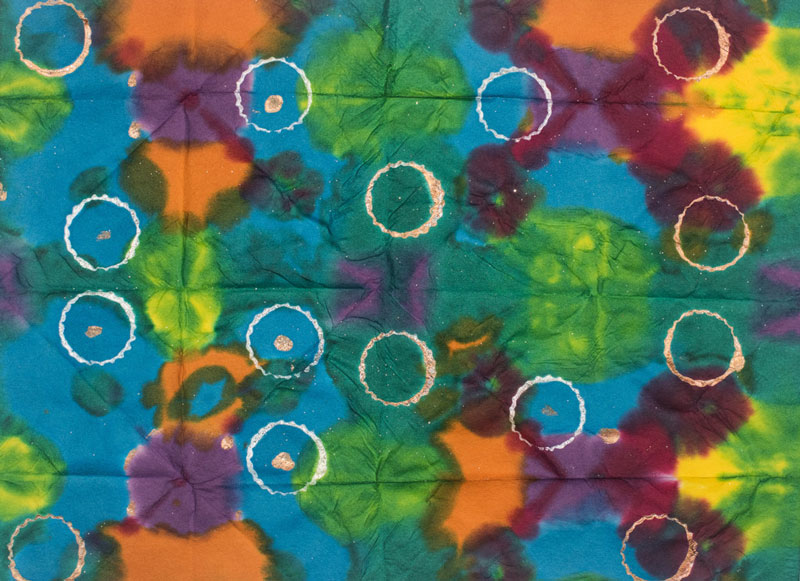Featured OMA Student Alumna: Casey Pax
Interview Rewrite by Karen “Sati” Williams

I came to Miami University as an honors student, stumbled upon Opening Minds through Art, and volunteered for the OMA program in my freshman year. I missed my high school arts community and I was intrigued by OMA’s work with older adults. I spent one semester as a volunteer, six as a student leader, and became a certified OMA facilitator after graduation from MU. As an art therapy major and Schweitzer Fellow at The School of the Art Institute of Chicago, I instituted my own OMA program in a continuing care community in Norridge, Illinois where I served as an intern.

What I learned from OMA is the power of art to connect people; that art can be the bridge that leads to conversations with people of any age or cognitive difference. I discovered that I have an innate ability to connect with older adults, who I feel do not get enough acknowledgement or recognition in our society. OMA also helped me solidify my personal relationship with art, and to intertwine art into my career path. I can honestly say that without my involvement with OMA, I would not have chosen to be an art therapist with a passion for working with older adults.
In my current work at The Mather, a continuing care community, I incorporate my art therapy training with clinical models that enable me to assist older adults of varying cognitive levels with changes in ability, loss, grief, and overall well-being. I also work with families helping them to navigate and process communications with their loved ones with dementia.


Through OMA, I learned that art can also be therapy. I’ve witnessed older adults complete art projects and experience pride and elevated self-esteem and self-worth. Seeing their artwork on display made them feel productive and engaged, so there is a therapeutic element to learning something new, particularly when experiencing memory loss. When nursing home staff witness residents learning and growing and creating, their perceptions of older adults also change. Changing the perspectives of nursing staff can lead to more person-centered care and better environments for these older adults.

I feel that it is important for young people to learn about cognitive impairment and dementia and through the OMA program, they build relationships with older adults which can greatly reduce stigma associated with aging. I have witnessed many volunteers transition from fear and apprehension to acceptance and even affection as they learn about their elder partner. The impact of these experiences ripples out into society, and some volunteers choose to go into nursing or community health to work with older adults due to their time with OMA.
I feel that the work that OMA does is empowering and transformational in that art helps to restore identity as an “artist” when other aspects of identity may be disappearing. I would never have discovered my passion for working with older adults if it were not for the OMA program. And for that I am very grateful!


